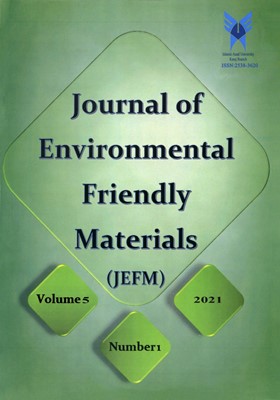-
-
List of Articles
-
Open Access Article
1 - Editorial
-
Open Access Article
2 - Investigation of the Effect of Volume Fraction of Martensite and Different Tempering Conditions on the Microstructure and Mechanical Properties of St52 Dual-Phase Steel Used in the Automotive Industry
M Shahverdi B Karbakhsh Ravari -
Open Access Article
3 - The Effect of Cooling Rate on the Microstructure and Mechanical Properties of the Plastic Injection Molds
Z. S Seyedraoufi M Samiee F Abdi -
Open Access Article
4 - Investigation of Aluminum and Composite Aircraft Wings Under the Influence of Aerodynamic Forces and their Effects on Environmental Impacts
S Ebadi K Shahbazi E Anbarzadeh -
Open Access Article
5 - Effect of Applied Voltage on the Formation of TiO2 Nanotube on Titanium Substrate using Anodizing Process
M Ghanbari Haghighi P Parsi Z. S Seyedraoufi -
Open Access Article
6 - Multiple Moving Cracks in a Non-Homogeneous Orthotropic Plane
R Bagheri S. M Hosseini -
Open Access Article
7 - Metallurgical Aspects of the Spinning Process in Metallic Liners
S. M. J Hoseini H Ghayour A. S Golazani M. K Asgarani I Ebrahimzadeh -
Open Access Article
8 - Investigation of Additive Manufacturing Process by LMD Method, Affecting Process Parameters on Microstructure and Quality of Deposition Layers
R Hedayatnejad H Sabet S Rahmati A Salemi Golezani -
Open Access Article
9 - The Methods of Quasicrystals Producing
H Bakhtiari M Abaei M. R Rahimipour M Farvizi M. J Eshraghi -
Open Access Article
10 - An Overview of Quasicrystals, Their Types, Preparation Methods, Properties
H Bakhtiari M. R Rahimipour M Farvizi M. R Khanzadeh -
Open Access Article
11 - Application of Fully Green Bio-Composites in Manufacturing of Wind Turbine Blades: A Strategic Review
N Desai P Bhatt M Solanki
-
The rights to this website are owned by the Raimag Press Management System.
Copyright © 2021-2025







